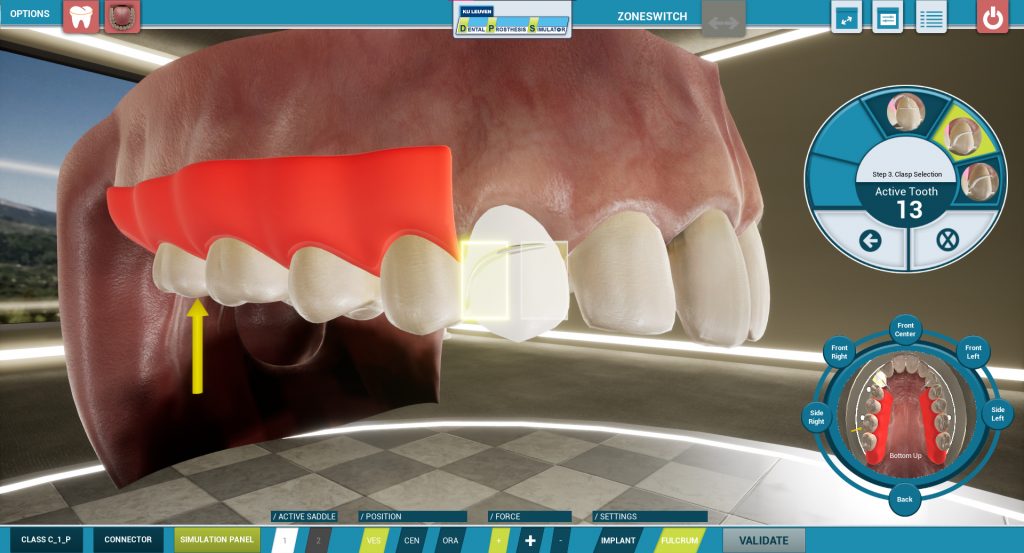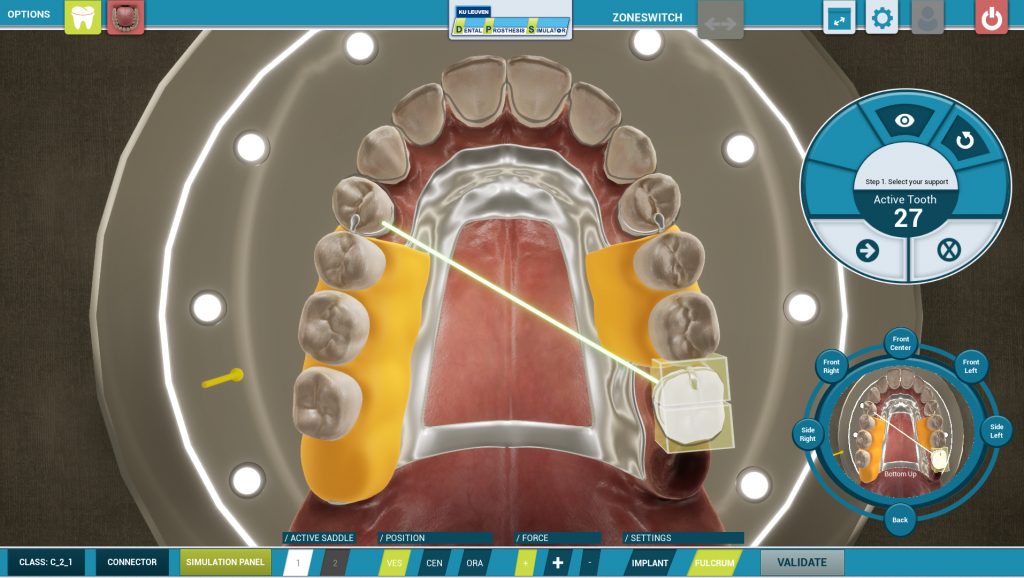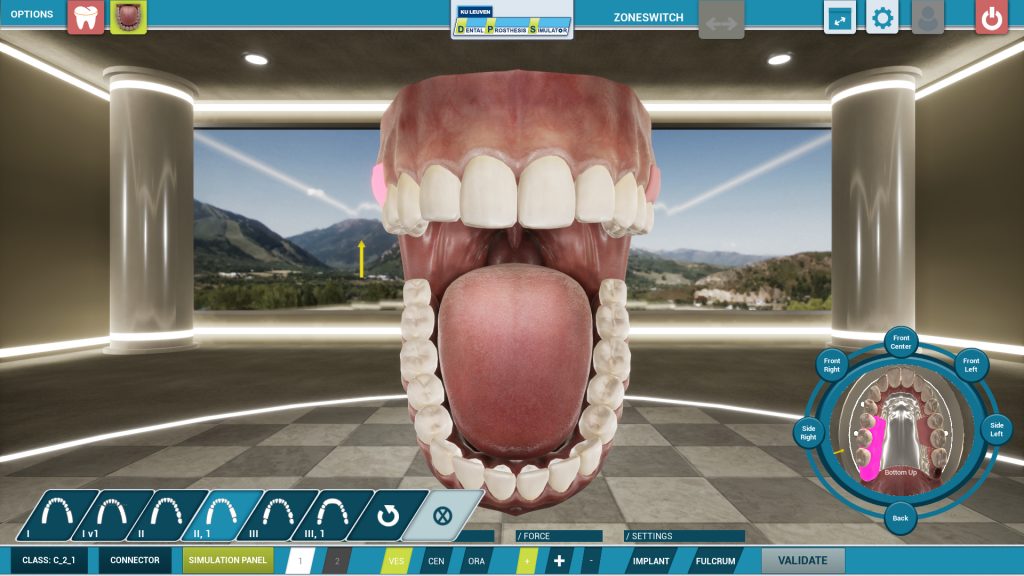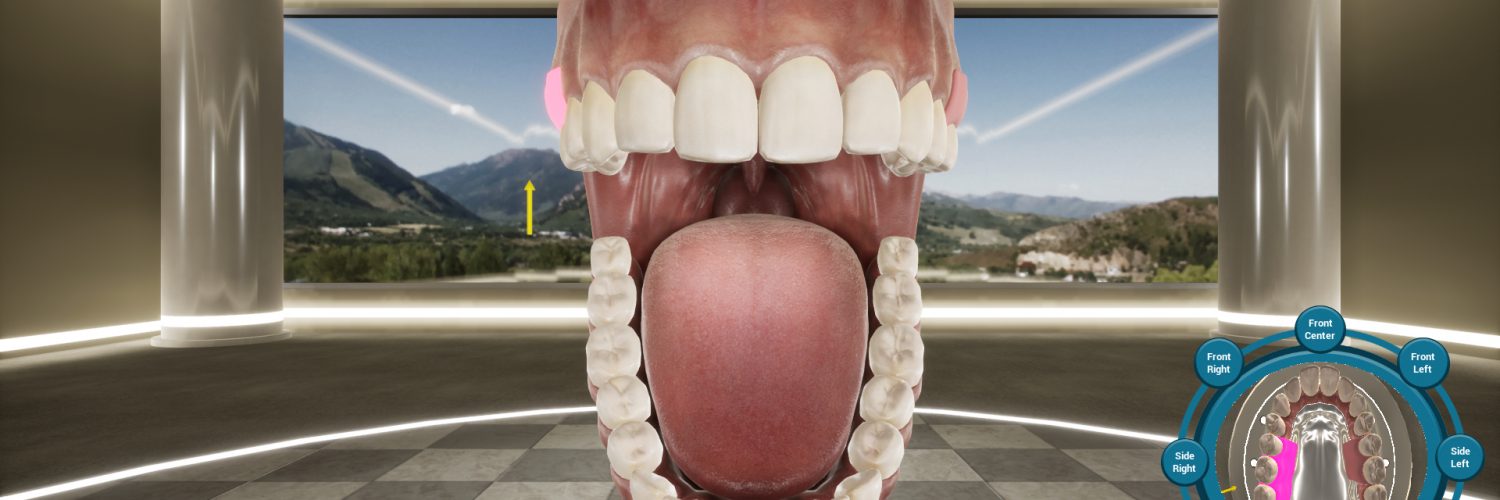By Sven Graindor and Joke Duyck, KU Leuven, Belgium.
Dental Prosthesis Simulator is a 3D application developed by KU Leuven that won the MEDEA Audience Favourite Prize in 2021.
Purpose
Within the course component (OPO) ‘Removable prosthetic dentistry’, part of the 3rd bachelor year Dentistry, the existing tools proved to be insufficient to realistically show students how to design a dental prosthesis. Especially the different prosthetic constructions and the consequences of a faulty construction were difficult to bring across. “Learning how to design a removable tooth-replacing frame prosthesis for partly toothless patients is a complex subject for both student and teacher”, professor Joke Duyck says. “It comes down to explaining the mechanical principles of a construction that students do not yet know. Spatial awareness of the frame prosthesis and also the chewing forces impacting the frame are essential for this. Up until now this was done with pictures, drawings, static models, the depicting skills of the teacher and the imaginative power of the students. For many students it was difficult to grasp.” In addition we found out that the knowledge of this topic faded when the years passed.
After intensive support from the Faculty of Medicine it became therefore apparent that a 3D application for this course component was best suited to solve this issue. The application was developed in collaboration with the Biomed Technology Lab, the STEPS Skills centre and the Faculty of Medicine’s Expertise centre for Education (EcO).
Proof-of-concept
The Expertise centre for Education (EcO) and the course component coordinator professor Joke Duyck saw that a 3D application could mean an added value for the course component, e.g. for the education goal ‘acquire insight in developing a removable prosthesis’. Next, the Biomed Technology Lab and the Faculty of Medicine took time to clarify the educational goals and requirements for the application, taking educational, specific and technical requirements into account.

In just a few weeks, the Biomed Technology Lab, a development lab for 3D and VR applications within the biomedical group, first developed a prototype to give a first impression of the final application. The prototype included a limited set of possibilities used to quickly assess whether the concept and the technology meet the expected objectives and educational goals.
We showed the prototype to students and, based on their feedback, we became confident that such a tool would be an added value.
Feature-rich
The tool starts from an interactive high-resolution 3D model of a full set of teeth, in contrast to a static model. The professor then selects a specific patient situation (classification) where the actual teeth are replaced with a saddle. Next, the metal frame that keeps the saddle in place is constructed, step-by-step, using the necessary metal anchors and supports, and a connector to join everything together.

After that the system will make a simulation of the construction. In case of a faulty construction, the effect of the impact of chewing forces is shown with animations. It also possible to show the impact of certain choices during the frame design via animations.

As a result, students with spatial awareness problems will be able to catch on a lot faster. Everything can be displayed with various camera perspectives or allows 360° manual rotation and movement. The teacher can navigate to the correct perspective.

The final application, which was finished in just 5 months, includes realistic 3D models and can now validate more than 450 class scenarios with corresponding animations. The number of class scenarios can easily be expanded by the teacher using an excel file (which is then imported into the application).
The teacher can also use so-called presets allowing to store a specific configuration within the tool which can then be loaded directly during lessons to show specific situations.
Unique in the market
At this point there is no other tool on the market for this discipline, which additionally both caters for teachers and students. As a result of the close collaboration between teachers and educational specialists, the tool is educationally substantiated and completely tailored to the teacher’s requirements.
Student Edition
In 2021 the teacher tool has been converted into a student version which offers 60+ cases (patient situations) that they can solve. We also introduced gamification by offering cases with increased difficulty, the ability to store their results and keep track of their progress. The student version was released in December 2021 and will be further improved in the upcoming years.
Author: Sven Graindor, XR Project Lead & Developer, KU Leuven, Belgium.














